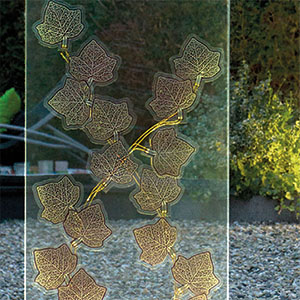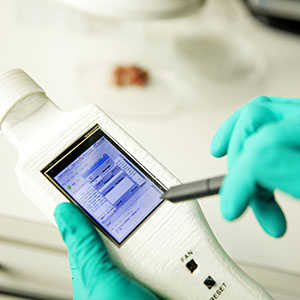Small structures with large effect
At SDU NanoSYD, we conduct research and development of solutions for a sustainable future within the interdisciplinary fields of nanoscience and nanotechnology. By this we primarily contribute to the SDGs #3, 6, 7, 8, and 12. You can find examples of our activities below.
SDG #6 – Clean water and sanitation:
AquaSafe – Intelligent water contamination monitoring system for environmental risk assessment and sustainable development
Emerging pollutants – Organic contamination
Water is the most important ingredient for life in our planet. Therefore, contamination of water sources is a very critical problem which needs great attention. The importance is so great that the United Nations has included the goal “clean water and sanitation” on their 17 sustainable development priority goals.
There are several emerging pollutants, a threat to the quality of water systems, environment and life. The emerging pollutants can be classified in three main groups: organic substances (pathogens, pesticides, hormones, pharmaceuticals and industrial chemicals), inorganic substances (trace and heavy metals) and nanoparticles and microplastics. This project addresses mainly the first group, namely organic substances.
Contamination by organic substances includes microbiological pathogens which are present in water due to inappropriate wastewater treatment and disposal or by long-term water storage, for example. Pathogens (bacteria and virus) are responsible for many diseases in both humans and animals, causing huge impact both in public health and livestock production.
Imprecise monitoring with expensive and bulky equipment
Due to the dynamic nature of water systems, water properties are in constant change, and sporadic measurement is therefore imprecise. There is thus a need for real-time measurements. State-of-the-art standard monitoring methods for these substances with expensive and bulky equipment are scarce and focus mainly on indirect detection by measuring changes on the physical-chemical properties of water that indicate the presence of contaminants. Since the measurements are indirect and the contaminants cannot be specified, the detection limit is inadequate for environmental risk assessment.
Monitoring platforms which focus on specific pollutants can reach higher detection limits and specificity but do not give a full picture of the pollutant spectrum [9-13]. On top of that, these platforms cannot measure where and when the pollutants were released or for removing the contamination source.
Development of a low-cost lab-on-chip sensor for specific measurements
During the past years, microfluidic-based techniques have emerged as an approach to detect biological matter in fluidic samples. In the AquaSafe project, we use these techniques to develop a lab-on-chip solution that can measure the emergence of bacteria in liquid samples. In collaboration with Feevale University in Brazil, the technique has been adapted to detect other microorganisms, such as virus.
Our goal ist to develop a low-cost lab-on-a-chip sensor which can be mounted onto a system that automatically collects water, analyse it to determine the concentration of a variety of contaminants and transmit the data in real-time to a database which can be accessed by a phone or computer application.
Related reading
SDU Sønderborgs forbindelse til Arnold Schwarzenegger, sonderborgnyt.dk, 9 October 2017

SDG #7 – Affordable and clean energy:
The organic and flexible future of solar cells
Since many years, solar cells are an alternative energy source that enables us to use less fossil fuels. But to meet the overall increasing demand for energy, it is necessary to increase the share of green energy. For this, researchers from NanoSYD’s OPV group work on the development of organic solar cells that, in contrast to conventional solar cells, are made of materials from organic chemistry, namely carbon-based molecules.
Most solar cells that we see today are made of the semiconductor material silicon or gallium arsenide. This means that they consist of expensive, energy cost-intensive or rare earth metals that have an environmental impact and aren’t especially green materials for the production of green energy. In addition, silicon solar cells are heavy, non-flexible and they take up a lot of space as they need to be mounted onto large constructions.
Organic solar cells, on the other hand, have a number of advantages that make them an attractive solution for harvesting energy, with lots of possibilities for application. Due to their chemical structure, organic solar cells can absorb large amounts of sunlight, despite being very lightweight and ultrathin. Among other things, they can be printed on flexible foils in any colour or shape. Furthermore, they are transparent which enable them to be used in windows, for example.
Solar cells are sensitive to sunlight and oxygen
The efficiency of organic solar cells is about 18%, which is nearly as high as the efficiency of silicon solar cells. But the problem is that this efficiency only can be reached under laboratory conditions. This poses the challenge. As soon as the organic solar cells are produced under industrial conditions and exposed to sunlight and air, their material starts to oxidise. Tis leads to a loss of their chemical properties and their efficiency decreases by one third.
To counteract this degradation process, the researchers encapsulate the cells. But this encapsulation makes the solar cells less flexible and less transparent, plus that it does not stop oxygen and water vapour to get into the cell.
Stabilisation for stress
This is why they now works on adding materials to the solar cells layers that can protect them against mechanical stress. For this, they found a method to screen and chose those materials that do not affect the solar cells’ advantageous properties. NanoSYD's OPV group has thus been able to increase the efficiency of the solar cells with a factor 10, which, by spring 2020, was world record. Now the goal is to get these results upscaled to reality.
Related reading
Polymererne der ikke vil knækkes, Aktuel Naturvidenskab, March 2020

SDG #12 – Responsible consumption and production:
Reduction of carbon emissions by precise measurement of expiry date of meat and fish
Food waste due to imprecise expiry date
In Denmark, there is a yearly waste of 137.500 tons of meat and fish products and from these, about 43.000 tons are wasted due to doubts about freshness and over-careful expiration date estimations. This waste corresponds to about 605.000 tons in CO2 emissions which could be eliminated by taking measures for waste expiry. There is no legislation regarding expiry determination, and it is the producers' own responsibility to determine this date. Generic expiry date curves have an intrinsic fail margin of about 6 days, leading to a considerable waste throughout the value chain. In private households, we only have our senses or the printed expiry date on the package as a guideline (determined with a huge safety margin), leading to an enormous amount of waste.Meat sensor measures freshness
In collaboration with AmiNIC ApS, NanoSYD has developed a technology consisting of a hand-held device based on microcantilever sensing. The device can measure the concentration of a biomarker gas and give an instantaneous indication on freshness, enabling users to precisely evaluate if the product is proper for consumption, or if it should be disposed.
To be able to predict the precise expiry date of, e.g., meat it is necessary to have a sensor that can measure very low concentrations of the biomarker, because fresh meat only will emit very small amounts of this gas. In collaboration with AmiNIC ApS, SDU NanoSYD is now working on the optimisation of the sensor sensitivity so that food producers can measure extremely low gas concentrations and thus predict the exact expiry date. This will have an even larger impact on the carbon emissions and food waste.
Related reading
Sensor-næse vil spare samfundet for madspildmilliarder, electronic-supply.dk, 3 March 2020
